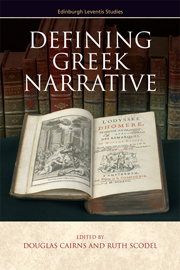Book contents
- Frontmatter
- Contents
- Preface
- Notes on Contributors
- 1 Introduction
- PART I DEFINING THE GREEK TRADITION
- 2 Beyond Auerbach: Homeric Narrative and the Epic of Gilgamesh
- 3 Homeric Battle Narrative and the Ancient Near East
- 4 Narrative Focus and Elusive Thought in Homer
- 5 Structure as Interpretation in the Homeric Odyssey
- PART II THE DEVELOPMENT OF THE GREEK TRADITION
- PART III BEYOND GREECE
- Bibliography
- Index
2 - Beyond Auerbach: Homeric Narrative and the Epic of Gilgamesh
from PART I - DEFINING THE GREEK TRADITION
Published online by Cambridge University Press: 05 September 2014
- Frontmatter
- Contents
- Preface
- Notes on Contributors
- 1 Introduction
- PART I DEFINING THE GREEK TRADITION
- 2 Beyond Auerbach: Homeric Narrative and the Epic of Gilgamesh
- 3 Homeric Battle Narrative and the Ancient Near East
- 4 Narrative Focus and Elusive Thought in Homer
- 5 Structure as Interpretation in the Homeric Odyssey
- PART II THE DEVELOPMENT OF THE GREEK TRADITION
- PART III BEYOND GREECE
- Bibliography
- Index
Summary
INTRODUCTION
One of the most ambitious attempts to define ancient Greek narrative, and one of the most influential to date, is Erich Auerbach's book Mimesis. In the famous opening chapter, written in Istanbul in 1942, Auerbach argues that Homeric narrative is all surface and illuminated detail, whereas the Hebrew Bible is elliptic, deep and demanding of its reader. To this day, Mimesis informs what modern readers see as characteristic of Homeric narrative, and of classical Greek literature more generally: for that reason alone, it seems important to revisit it in this volume. I would like to take the opportunity to consider how well Auerbach's work has stood the test of time; and to reflect on what it can tell us about the nature of this collection: what does it mean to define Greek narrative? I begin by looking at how Auerbach's vision of Homeric narrative emerges from what he himself called ‘the particular situation’ in which he conceived it. I then sketch out what I see as the circumstances in which, some sixty-five years after Auerbach, we find ourselves engaged in a similar set of questions.
HOMER AND THE BIBLE
On a superficial reading, the opening chapter of Auerbach's Mimesis presents itself as a fairly straightforward exploration of Homeric narrative technique. Auerbach looks at a specific passage in Odyssey 19: the disguised Odysseus has entered his palace and is having his feet bathed by his old maid-servant, Eurycleia. Eurycleia notices a scar which Odysseus acquired as a young man, while hunting with his grandfather Autolycus. The scar serves as a mark of recognition throughout the Odyssey, but here it threatens to give away Odysseus’ identity at an inopportune time: the hero reacts by clasping Eurycleia’s throat and swearing her to silence.
- Type
- Chapter
- Information
- Defining Greek Narrative , pp. 13 - 28Publisher: Edinburgh University PressPrint publication year: 2014

